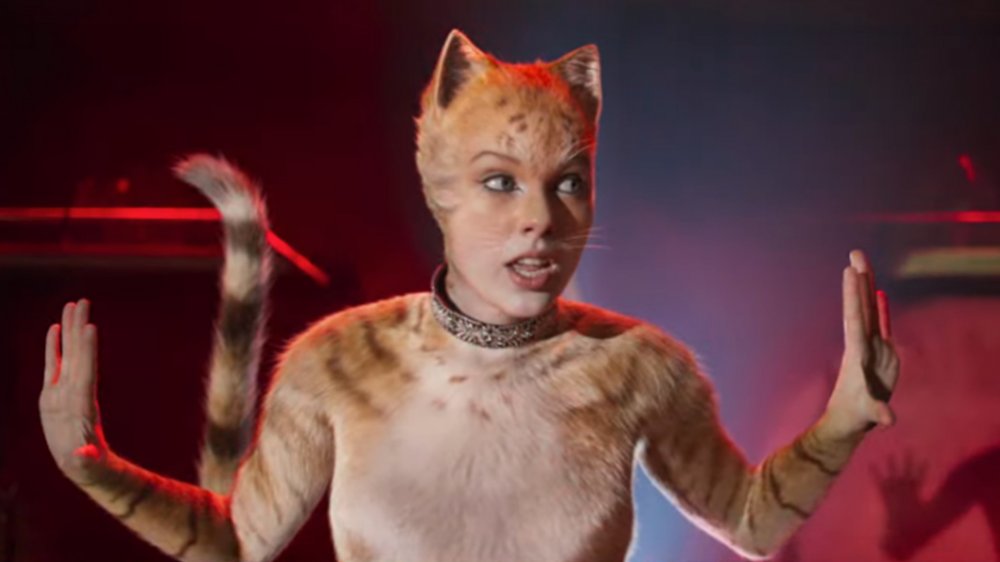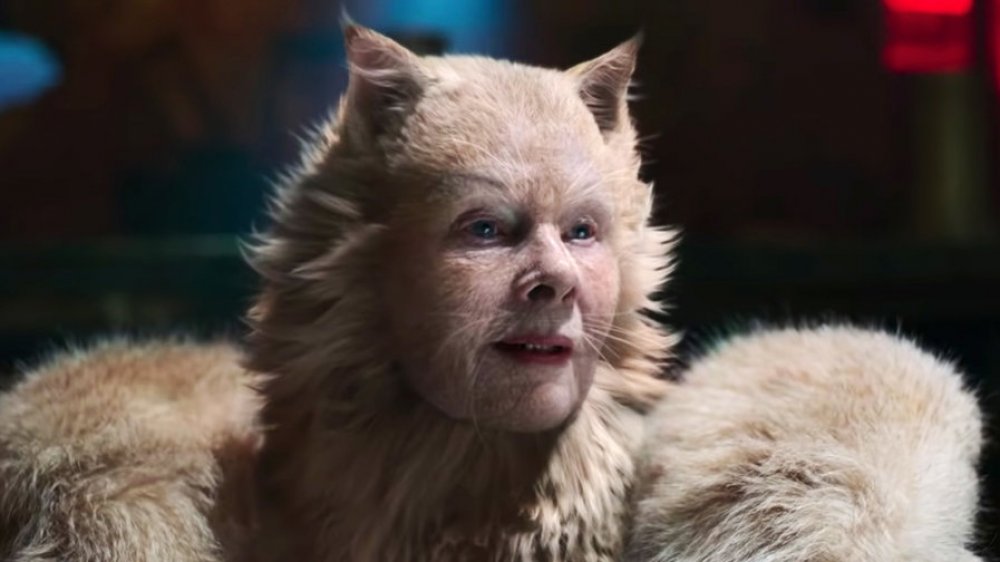Cats' Visuals Got Updated After Audience Backlash
Jellicles can and Jellicles do a number of wild things, but they also sometimes need a bit of a tune-up to put a spring back in their step.
Universal Pictures' upcoming Cats film adaptation didn't get off to the most auspicious start when its first trailer landed in July 2019 to an almost unanimous exclamation of horror heard 'round the internet. Viewers immediately began drawing parallels to the disastrous rollout of Sonic the Hedgehog's initial trailer a couple months before, which left fans so disappointed that Paramount Pictures delayed the release of the film and completely redesigned the titular hedgehog. It's one thing when the uncanny valley character design is for a video game character in a comedy movie, but it's a special kind of ominous when chills-inducing visuals are present in a Christmas movie release meant to appeal to all ages and evoke the magic and mysticism of the holiday season. Cats has indeed faced the same kind of intense backlash that Sonic the Hedgehog did — and we're now learning that the film underwent similar (but not nearly as intense) revisions in the visual effects department.
Following the release of the second Cats trailer, which debuted in November 2019, director Tom Hooper has emerged to remind us that trailers aren't necessarily reflective of the final product – especially in the case of films that require so much post-production work like this one. He explained to Empire that the visual effects shown in the trailers were "at a very early stage," given that Cats only wrapped filming in March 2019, and that the cats will look quite different up on the big screen. The updated visual effects were, according to Hooper, spurred in part by some of the more intense backlash to the original Cats trailer.
As Hooper detailed, "Possibly there were, in the extremity in some of the responses, some clues in how to keep evolving [the production]. When you watch the finished film, you'll see that some of the designs of the cats have moved on since then, and certainly our understanding of how to use the technology to make them work has gone up, too."
Well, that's reassuring and alarming all at the same time.
Using event cinema to experiment off the cuff
Hooper's correct in his assertion about the Cats trailer not representing the finished film. Post-production is almost never finished when trailers are cut, and the people who piece together trailers prioritize scenes that provide the best material. This is usually done by an individual or a group of creatives entirely separate from production or post-production staff.
Now, what isn't quite so correct (or great) is Hooper's comment about "understanding how to use the technology." For context, we need to take a look at Hooper's CV. His crowning achievement and the work that was the obvious deciding factor in choosing him to direct the extremely expensive Cats adaptation is the 2012 film translation of the musical Les Misérables. On its face, it makes a ton of sense: Hooper's Les Mis was well-received and featured an ensemble cast of triple-A stars, just like Cats, so why not put Hooper behind the helm?
What isn't in Hooper's background is any experience with technologically dynamic CGI filmmaking. The King's Speech, The Danish Girl, the 2008 miniseries John Adams with Paul Giamatti — all prestige work, and all focused on a more classical artistic film format usually involving rich physical costuming.
There's green-screening and CGI work in almost all films today, but Cats is a whole other (literal) animal. Frankly, it's naive to be waist-deep in post-production utilizing complex composition to unify three layers — footage of the professional dancers (we all know perfectly well Taylor Swift cannot perform en pointe), the actors' faces delivering their lines, and the CGI required to make all that into a cat – and say in an interview that you were still working on "understanding the technology" after the release of the first trailer. At of the end of November 2019, mere weeks before its theatrical release, Cats was still undergoing changes and almost didn't qualify for the Golden Globes because of it.
The insistence on this complex digital composition feels like hubris when the fuller context is considered. There are many possible reasons Universal went this route — studio brass may have demanded the A-listers' faces be pasted on in hopes of drawing in a wider audience. Maybe an individual member of talent insisted on being recognizable to sign on, necessitating everyone be made to look half-human, half-cat to maintain consistency. Perhaps Hooper forgot while conceiving his artistic vision that Les Misérables and Cats are polar opposites of the musical art form whose only commonality is the narrative format they share, and that cats shouldn't be realistically formed at all.
In any case, there's a long and rich history of animation — traditional, digital, and semi-realistic CGI alike — utilizing stylization in its character design to tonally match its concept. The actual Cats musical, as it's been physically performed for decades, employs highly stylized costumes and makeup that certainly don't look realistic — which is part of what made Cats so successful. Literally slapping James Corden's face onto a fat cat didn't necessarily have to happen, and to be honest, that level of realism doesn't match the forced perspective of every shot we see the cats exist in. The surroundings are stylized, so why aren't the cats?
We can only pray that come Christmastime when folks take their seats to watch Cats, whatever bandaid the film's VFX artists (bless them, every one) came up with to fix the issue pays huge dividends, because as far as we can tell, a bandaid is the best anyone can hope for.
Cats will debut in theaters on December 20.

